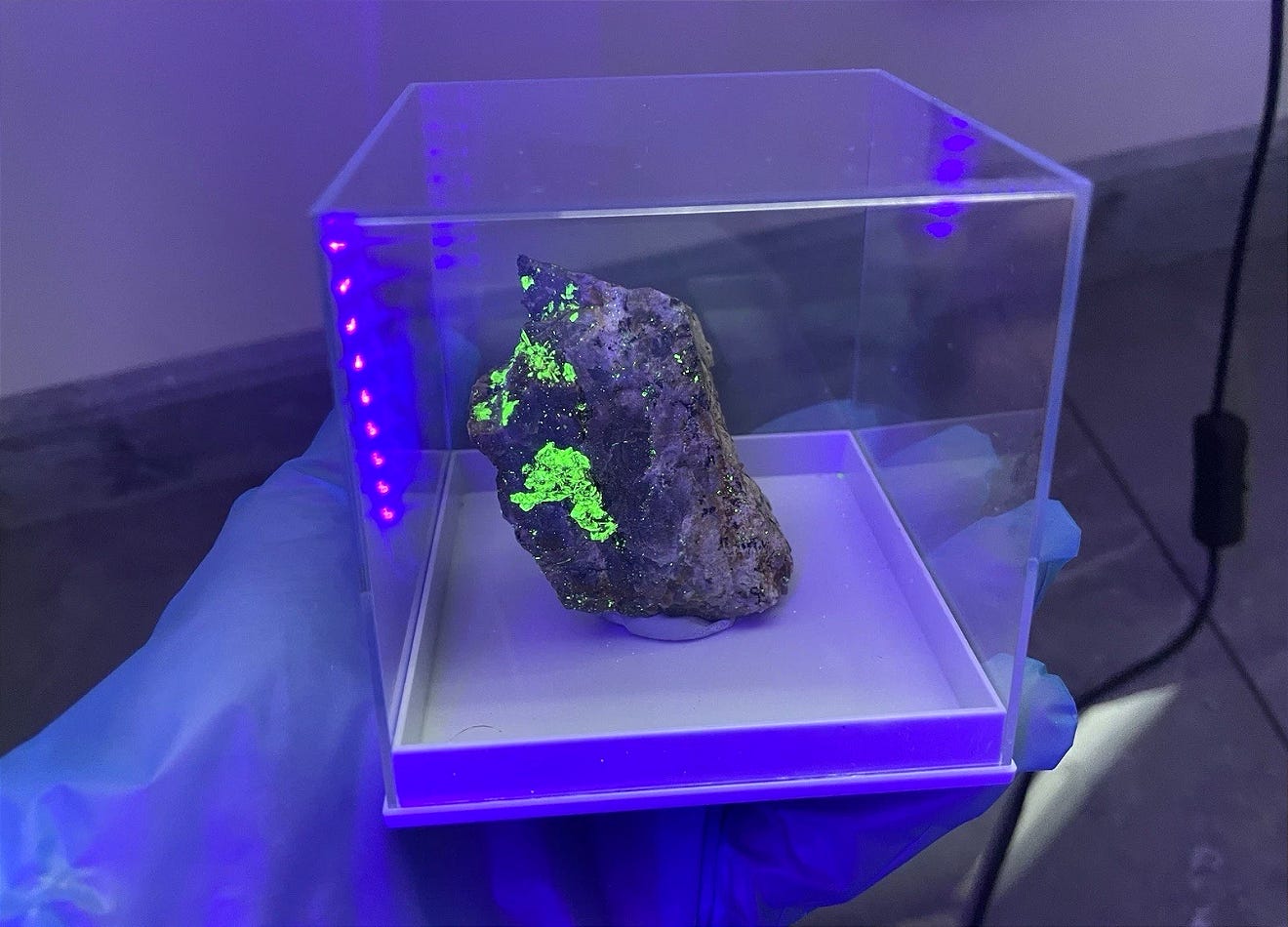I impulse purchased uranium on the internet and regret it
As impulse buys go, buying uranium goes on my list of ‘bad things that have happened after a beer’
I won’t advertise the marketplace from which this came, but understandably, sellers dealing in radioactive materials aren’t permitted. Given my piece of uranium came from the Czech Republic – likely the Ore Mountains on the border with Germany – it makes you wonder how it was safely transported in bulk without being spotted.
Don’t ask questions that you don’t want the answer to.
This is Uraninite, commonly known as pitchblende, and is the most important ore for mining uranium. The secondary material on my sample is Autunite, which fluoresces green under UV light.
For those interested in this sample’s radioactivity, it measures 2.90 μSv/h on my Radiacode, which is roughly 27 times background radiation. It’s not my most radioactive object, but for reasons below, it is the item I’m most safety-conscious around.
A short history
Its place in scientific discovery was established by Marie Curie, who famously isolated pure metallic radium from the rock. For a large part of history, Uraninite was more of a waste material as the rush for radium occurred. To find one gram of radium it was necessary to mine eight tonnes of uranium.
The uranium waste material was used from the 19th Century in oxide form to primarily colour glass green, now popularly collected as Vaseline and uranium glass. It was also used in glazes, such that can be found in vintage orange (so-called ‘radioactive red’) Fiestaware. Meanwhile, radium was seen to provide health-giving properties, causing it to become one of the most expensive substances in the world by 1909.
It was not until the development of the world’s first nuclear bomb, made famous by Christopher Nolan’s Oppenheimer film, that uranium found its primary purpose. It’s likely my rock came from the same place where mass mining took place to secure enough uranium for the Manhattan Project. At the same time, companies such as Fiestaware had their uranium stockpiles seized by the US Government.
This is an extremely condensed history, but the full story is fascinating, inspiring the title of this Substack.
Safety first
When I purchased Uraninite it was completely impulsive and opportunistic. Long-term, I’m not interested in collecting radioactive rocks, and I will likely find an educational place to donate this. Without all the equipment of a seasoned hobbyist, I’m extra cautious about remaining safe.
For a start, Uraninite is incredibly dusty and flaky. It’s very easy to accidentally contaminate surfaces with radioactive particles, some of which glow under UV light. It remains within the container it arrived in, and I’m aware that as time goes on, this sample will likely continue to break down.
It’s also a high emitter of radon gas, an invisible radioactive gas that appears in nature, but long-term exposure can lead to lung cancer. Typically, alpha radiation isn’t of a concern, as it’s the least penetrating form of radiation, stopped by a few inches of air or the outer layer of skin. However, radon gas is an alpha emitter that finds itself into the airways, which then means alpha will irradiate internal tissue.
Uraninite emits alpha, beta, and gamma radiation – the latter being the greatest external threat. My sample is currently blocked by its box, the glass of a display cabinet, and distance, which means zero readings from a foot away. However, not all samples are the same.
Beautiful, but it will find a new home
My Radium Quest is focused on radioactive antiques, but this Uraninite sample is the exception to the rule. It’s eerily beautiful under UV light and is extremely difficult to find if you’re in the UK. From a long-term safety perspective, it will eventually find a new home, hopefully with a school. Until then, it will be safely locked away.
Oh, and never let me impulse buy stuff on the internet.



